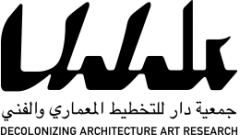Posted: 25.05.2008
A Trilogy on Tehran
Today Iran’s population is twice as big as it was before the revolution of 1978. Over 70% of the population is younger than 25. About 80% of the society can read and write. Before the revolution only 40% of the Iranians could do so. Young people are self confident. They are on their way to change the society, although slowly but certainly. Through these changes, conflicts between the generations obviously grow. One effect is the increasing number of young people, who run away from their homes. Most of them are girls between 15 and 18 years.
The documentary Good Times/Bad Times is about five young people, each as a representative of a certain group in the Iranian society, whereas the so called ‘Run away Girls’ are absent. Because, although they are visible in the city, in the society they mainly seem to be invisible. And, as they have decided to leave their homes, I do not see the right to `present` them in front of the camera. So I decided to mention them, but not to make an eye catching subject out of them for the video.
Tehran 1380 is an attempt to go one step deeper into the city of Tehran. The city was analyzed in the first video, the new inhabitants of it shall be the subject of the second one. The camera gets closer to the characters and focuses on the city from another point of view. Without an Off-Text, and using as less obvious explanations as possible, images shall get more importance. The video is a description of one moment. It has no definite ending, just as no thesis exists about the next future of the Iranian society.
Persepolis is the third video of the Tehran Trilogy. The title of the work is the name of a modern high rise building in north Tehran in which the author lives. It’s a collection of the memory of Tehran. Neighbors of different ages describe the city in different times. Neither the person nor the city is visible. Voices and images of living-rooms are the only elements through which the viewer can imagine the city and its inhabitants.
Excerpt from a text in Flash Art, Chus Martinez (2006):
Urban Development in Istanbul: The Compounds (new work)
The new upper classes have found homes in the prosperous pettiness and civic mindedness of the gated communities. The insipid colors of the high buildings match the green grass of the tennis courts as well as the turquoise of the inviting but lonely swimming pools. Removed from the loud and moody mass movements of people and traffic in the streets of downtown Istanbul, these compounds are built around the notion of difference. This difference leaves behind a pleasing feeling of self-sufficiency: it suggests, vaguely but intensely, that the country beyond the limits of the compound moves towards a regulated future, a promise of sustainable happiness perhaps with space for a few more – but who knows… Difference alone is not enough to elicit pleasure… The term exotic is normally attached to more colorful and faraway things than these strange wastelands in the middle of nowhere, quite disconnected from the city center. In this way, the work features a new twist on exoticism: the private club as the perfect platform for a rehearsal of life removed from the inconveniencies of life itself.
– – – – – – – – – – – – – – – – – – – – – – – – – – – – – – – – – – – – – – – – – – – – – – – – – – – – – – – – – – – – – – – – – – – – – –
Solmaz Shahbazi was born in Tehran in 1971, and now divides her time between Germany and Iran. She completed her studies in fine arts and architecture at the Akademie der bildenden Kuenste in Germany in 2000, and since then, has been producing video and photographic works. She uses the documentary format in both her videos and her photography as a tool to analyse different modes of imagery, expectations of the unknown and affecting perception. Her collection of images testify to the potentially fictitious nature of the photographic medium, providing a view as to how we filter images, formulate conceptions—and ultimately awakening us to the fallibility of preconception, the power of the photographic frame. In addition to the 7th Sharjah Biennial, the 9th International Istanbul Biennial in 2005 and 1st Thessaloniki Biennale of Contemporary Art Shahbazi’s work has been exhibited widely in Europe, USA and the Middle East since 2001.
